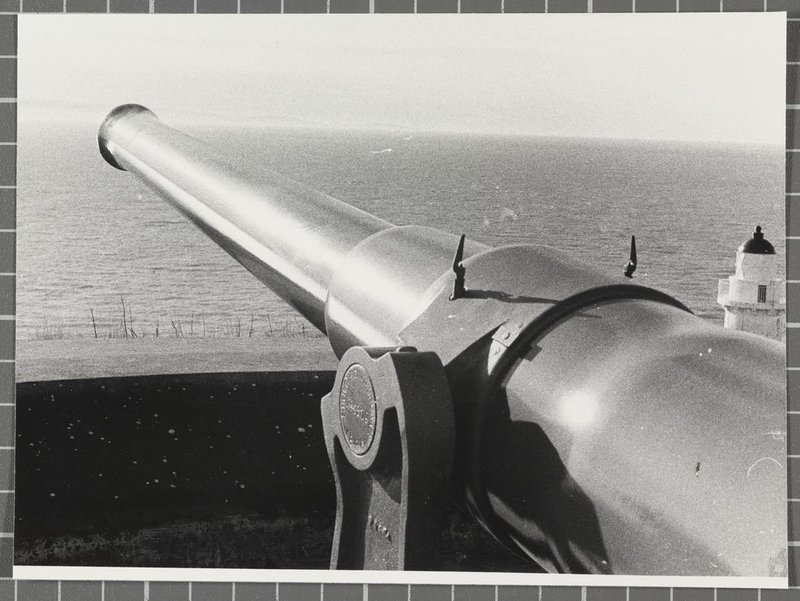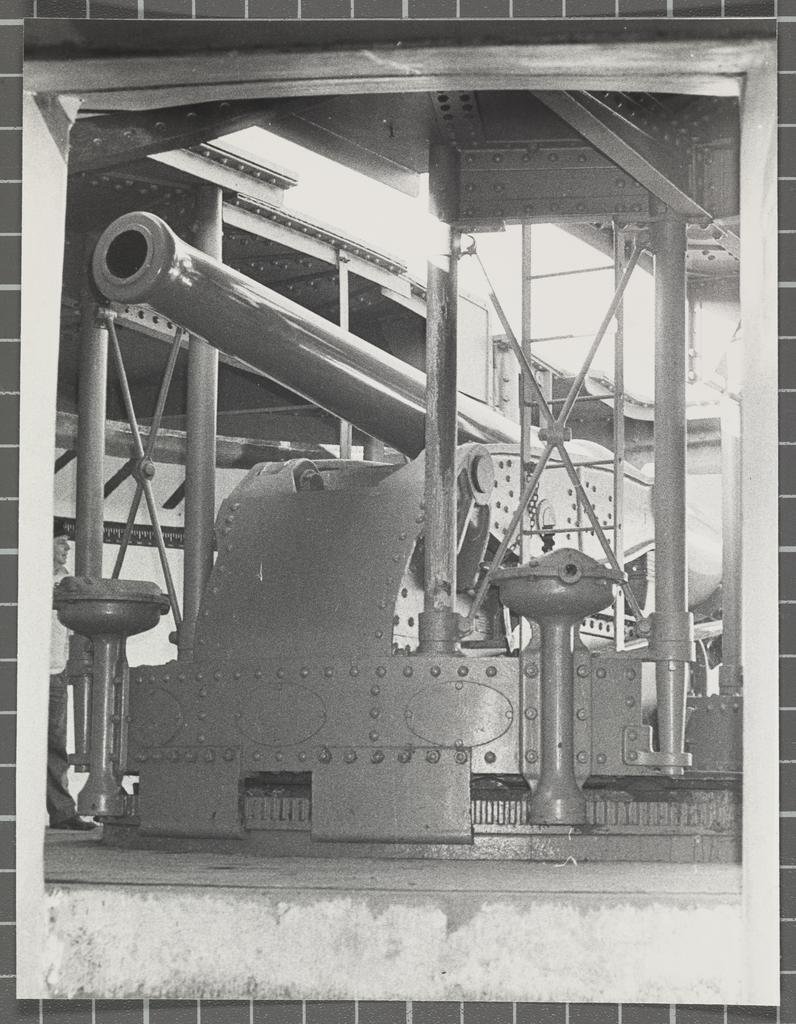The Armstrong Disappearing Gun at Taiaroa Head was installed to guard Otago Harbour. It was operational from 1889 to 1919 and called into service again from 1941 to 1943. It is a wonderfully inventive and impressive example of late 19th century engineering.

The Armstrong Disappearing Gun, raised for action. Hocken Collections, reference Number: P2014-014/6-017-002
The Armstrong Disappearing Gun was one of thirteen Armstrong 6-inch disappearing guns, which were purchased in 1885 to improve New Zealand’s coastal defence. They were purchased in response to concerns about Russian expansionism and the possibility that Russia may attack British colonies. Originally, there were four guns at Auckland, four at Wellington, two at Lyttelton and three at Dunedin. These guns were the latest military technology.
The gun at Taiaroa Head was manufactured by W G Armstrong & Co in 1886, at Elswick, near Newcastle upon Tyne, England and installed at its current site in the Otago Peninsula in June 1889. It is a breech loading gun, meaning the ammunition is loaded from the rear end of the barrel. This made loading faster compared to older muzzle loading guns. Its 6-inch bore was riffled. This added spin to the shell, improving range and accuracy. The gun could fire a 100-pound (45 kilogram) shell out to 8,000 yards (7,300 metres).
Disappearing guns were developed during the latter part of the 19th century to give greater protection to the gun crew and to hide the gun from enemy view and fire. The gun is mounted on a hydro-pneumatic carriage and used the force of its own recoil to move it backwards and down out of sight into a protected pit. It was then reloaded in relative safety before being returned to the firing position by the energy stored in the hydro pneumatic system.

Armstrong disappearing gun, lowered. Hocken Collections, reference Number: P2014-014/6-017-003
The gun today
The Armstrong Disappearing Gun at Taiaroa Head was only ever fired in practice during its lifetime, firing a total of 488 rounds, and was decommissioned at the end of World War II. Apart from the gun on Ripapa Island, in Lyttelton Harbour, which was also brought back into service during World War II, the other Armstrong Disappearing Guns around New Zealand’s coast were de-commissioned in 1925.
The Armstrong Disappearing Gun at Taiaroa Head has been restored to its 1886 condition by volunteers from the Antique Arms Association and Otago Peninsula Trust. The gun is now part of an extensive museum, within the Taiaroa Head Albatross Colony Sanctuary, housed in tunnels originally constructed as part of Fort Taiaroa.
Heritage recognition
The Armstrong disappearing gun at Fort Taiaroa, received an international heritage award from the Institution of Mechanical Engineers (IMechE (UK)) in 2013 which was officially presented at a ceremony in Dunedin on 24 January 2014. The award recognised the significant restoration of the world's only working Armstrong disappearing gun in its original position. The award was presented to the Otago Peninsula Trust, the New Zealand Antique and Historical Arms Association Otago branch, and the Fort Taiaroa Education and Resource Group.
Fort Taiaroa (Including six-inch Armstrong Hydropneumatic Gun and Underground Chambers) is recognised by Heritage New Zealand as a Category 1 historic place (List no.369).
More Information
“Armstrong Disappearing Gun receives New Zealand’s first Engineering Heritage Award,” Institution of Mechanical Engineers, 27 Jan 2014, accessed 10 November 2025.
Timothy Brown, “Award for protecting Armstrong gun,” Otago Daily Times, 24 January 2014.
Access
The gun is housed within the Fort Taiaroa Museum, within the confines of the Royal Albatross Colony at the end of the Otago Peninsula. Visitors may pay to take a tour of the museum only or of the museum and Albatross colony.
Location
Fort Taiaroa, Otago Peninsula
Page last updated 20 November 2025



